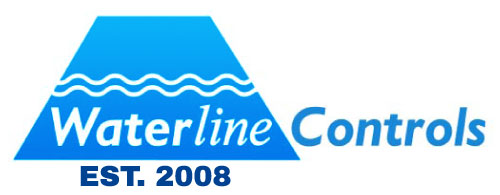Types of Automation for Oilfield Water Management
Automation Oil & Gas Sustainability & ESG Water & Wastewater Oilfield Waterfield engineer water wastewater pipeline valve control It’s a good time to be an oilfield water services company. Oil prices have stabilized above $100/bbl, the US rig count is the highest it’s been since pre-pandemic times, and the combination of domestic water shortages and ESG fund growth places a premium on sustainable water use.
All together, oil & gas producers are willing to pay a premium for quality oilfield water management services so they can continue to ramp drilling programs using recycled and reused produced and flowback water.
As the market for oilfield water services grows, so too does competition. Despite the labor shortage, the oilfield water services market is growing, with water management stalwarts such as Select Energy Services (7%), Oilfield Water Logistics (25%), DHI (22%), and Breakwater (20%) showing strong headcount growth over the last 2 years. Nearly every week it seems a new water transfer or water midstream company pops up.
Rising competition means established companies and newcomers alike will be looking for an edge to outpace their competition. In our last blog, we discussed why we think that automation is a great way for oilfield water management companies to differentiate. In this one, we want to talk more about what we mean by “automation,” breaking the idea down into 3 core categories.
The 3 categories of automation are:
- Remote Monitoring
- Remote Control
- Autonomous Operations
Let’s talk about what each is, and the benefits it offers for oilfield water services companies.
Remote Monitoring for Oilfield Water Services
As the name implies, remote monitoring is a concept that involves using sensors and transmitters to relay up-to-date operational information back to human operators to enable oversight from a distance.
In oilfield water management applications, this usually looks like installing wireless level, temperature, pressure, and flow sensors and transmitting the data they create via long-range wireless networks like cellular or satellite. Once transmitted, data is visualized in software tools that helps operators prioritize their operations. In certain cases, operators may also remotely monitor existing PLCs or RTUs that are connected to equipment like pumps or compressors.
In simple terms, Remote Monitoring connects assets to people, regardless of the distance between them.
Remote monitoring has many safety, sustainability, and efficiency benefits. It allows oilfield water service technicians to avoid higher-risk behaviors and windshield time, and it generally decreases the time to insight by getting information in front of operators more quickly. Furthermore, remote monitoring can enable water transfer and treatment companies to share information with their customers in real-time.
Of course, Remote Monitoring only provides information to operators. It’s what they do with that information that matters, which leads us to the next level of automation.
Remote Control
Remote Control reverses the flow of information created by Remote Monitoring. Instead of connecting assets up to people, Remote Control connects people back to their assets, giving them the ability to actuate changes in real-time whether they are 100 feet or 100 miles from the asset.
In oilfield water applications, Remote Control generally looks like connecting equipment controls – such as relays, VSDs, or stepping actuators – to a remote connectivity network such as cellular or SCADA. Operators then use software to send commands to these equipment controls, actuating changes.
The benefits of Remote Control essentially “double up” on the benefits of Remote Monitoring by completing the trip back to the asset and offering the same safety, sustainability, and efficiency benefits.
With Remote Monitoring and Remote Control, there is always a human in the loop. The human applies their experience and logic to infer necessary actions from Remote Monitoring systems and, in some cases, take those actions via Remote Control systems.
In many cases, humans should be in the loop. But in others, it can be beneficial to take humans out of the loop, which takes us to the next and final level of automation.
Autonomous Operations
Autonomous Operations involve both Monitoring & Control, but instead of human logic placed between them, we instead insert machine logic.
Certain operational tasks are highly repeatable, and the logic to complete them is routine and well-understood. In this case, Autonomous Operations can be used to connect insights to actions more quickly.
In oilfield water management applications, Autonomous Operations generally looks like connecting those things we are remotely monitoring, like pressure, temperature, level, and flow, to those things we are remotely controlling, like pumps and valves. In between these things we used algorithms and logic to determine how and when changes are made.
Of course, when implementing Autonomous Operations, it’s always a good idea to include oversight. This brings us full circle, back to Remote Monitoring & Control. By adding remote monitoring characteristics, such as alarming, to Autonomous Operations, we can determine if the machine logic has failed to achieve the desired state. Furthermore, we can take action through emergency shutdowns, to stop unsafe autonomous operations.
Is automation right for you?
There are many more examples of how Remote Monitoring, Remote Control, and Autonomous Operations can be applied in oilfield water services. Not every application will require any or all of these types of automation. Still, oilfield water companies look to carve out more efficiency, drive sustainability programs, or improve safety numbers will benefit from adding automation in certain cases.
Choose the type of automation that provides the most benefit. In many cases, Remote Monitoring serves as a great starting point, opening up opportunities to discover where the higher “levels” of automation can provide benefit.
Source
https://blog.wellaware.us/blog/the-three-types-of-automation-for-oilfield-water-management
Waterline Controls™
Our level sensors and controls aren’t just for use in residential potable water holding tanks; some of the other applications include cooling towers, sump pumps, wastewater, boilers, water storage tanks, and building fire protection water tanks.

